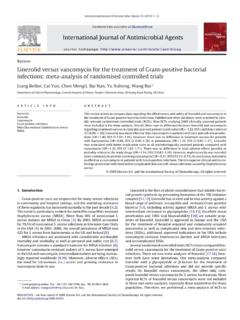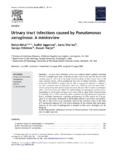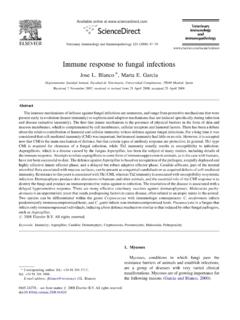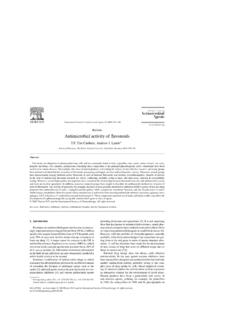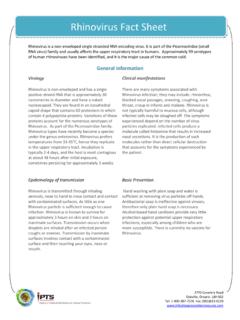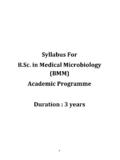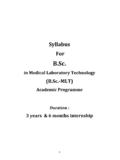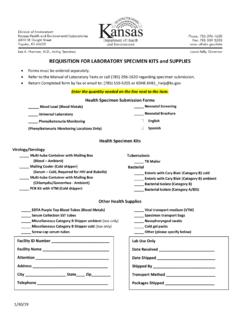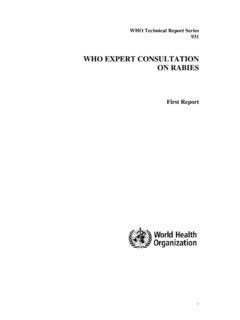Transcription of Mini-review Antiviral drugs for cytomegalovirus …
1 Antiviral Research 71 (2006) 154 163. Mini-review Antiviral drugs for cytomegalovirus diseases Karen K. Biron . Department of Clinical virology , Division of virology , GlaxoSmithKline Inc., RTP, NC, United States Received 15 March 2006; accepted 4 May 2006. Dedicated to Prof. Erik De Clercq on the occasion of reaching the status of Emeritus-Professor at the Katholieke Universiteit Leuven in September 2006. Abstract cytomegalovirus infections are associated with severe morbidity and mortality is patients at risk for disease because of immune system disabilities.
2 In particular, recipients of stem cell (HSCT) or solid organ (SOT) transplants. There are three systemic drugs approved for CMV treatment: ganciclovir, or its prodrug valganciclovir, foscarnet, and cidofovir. An anti-sense therapeutic, ISIS 2922, is also approved specifically as in intravitreal treatment for CMV retinitis. Ganciclovir, and more recently, valganciclovir, have been useful in proactive approaches of CMV disease management; in both prophylactic and preemptive regimens in HSCT and SOT populations.
3 The major anti-herpes agent valacyclovir has also been approved for prophylaxis of renal transplant recipients, or SOTs outside of the US. These drugs have provided major advances in CMV disease management, although they are limited by intolerable toxicities, oral bioavailability and efficacy, and risk of drug resistance with extended use. Several drugs are in early clinical development which may address these limitations; this review will provide an overview of our current arsenal of available drugs , and of those in the early clinical development pipeline.
4 2006 Elsevier All rights reserved. Keywords: CMV; Nucleoside analog; Nucleotide analog; Pyrophosphate analog; Novel benzimidazole riboside Antiviral drugs ; Alkoxyalkyl esters of cidofovir;. Ganciclovir; Valganciclovir; Valaciclovir; Foscarnet Contents 1. CMV infection and CMV disease .. 155. 2. Congenital CMV infection .. 155. 3. CMV-associated disease in transplant recipients .. 155. 4. CMV retinitis in AIDS patients .. 155. 5. Antiviral therapies for CMV .. 156. 6. Currently marketed Antiviral agents .. 156.
5 Ganciclovir .. 156. Foscarnet .. 158. Cidofovir .. 158. Acyclovir .. 159. Fomivirsen .. 159. 7. Anti-CMV drugs in clinical development .. 159. Maribavir .. 159. BAY 38-4766 .. 160. GW275175X .. 161. Cidofovir esters .. 161. 8. Summary .. 161. References .. 161. Present address: GlaxoSmithKline, 5 Moore Drive, RTP, NC 27709, United States. Tel.: +1 919 483 9310; fax +1 919 315 5243. E-mail address: 0166-3542/$ see front matter 2006 Elsevier All rights reserved. Biron / Antiviral Research 71 (2006) 154 163 155.
6 Human cytomegalovirus (CMV) is an opportunistic pathogen 3. CMV-associated disease in transplant recipients associated with significant morbidity and mortality in suscep- tible populations; those with immature or immunocom- CMV infection is the leading viral cause of morbidity and promised immune systems. Numerous Antiviral agents with in mortality facing patients who receive hematopoietic stem cell vitro activity against the various human herpesviruses have been transplant (HSCT) or solid organ transplant (SOT), with both described over the past three decades, yet only a few have been direct adverse effects resulting from viral invasion of organ sys- approved for the treatment or prophylaxis of CMV diseases.
7 This tems and indirect effects on the immune systems that increase article will provide an overview of the diseases caused by this the risk of other infections and promote acute graft rejection ubiquitous virus and a description of approved drug products, (reviewed in Gandhi and Khanna, 2004). CMV viremia is a and will briefly describe several drug candidates that are in early significant predictor for organ involvement and progression to stages of clinical development. CMV disease (Cope et al., 1997). Risk of CMV-associated complications is increased with 1.
8 CMV infection and CMV disease more potent immunosuppressive regimens, such as many of those required for HSCT, and transplant patients are at great- CMV is a double-stranded DNA virus of approximately est risk for CMV-associated disease within the first 100 days 220 kb and is a member of the beta class of human herpesviruses. post-transplant. For recipients of SOTs, the most vulnerable cytomegalovirus is easily transmitted, usually through contact patients ( high-risk patients ) are CMV-seronegative recipients with bodily fluids or by placental transfer.
9 Seroprevalence rates who receive an organ from a CMV-seropositive donor (D+/R ). vary by socioeconomic class and geographic location, but the CMV-seropositive recipients of allogeneic stem cell transplants overall seroprevalence in developed countries is estimated to are at risk for reactivation of latent CMV infection. be in the range of 30 70% (Pass, 1985). Primary infection In high-risk patients without symptomatic CMV disease , two in immunocompetent individuals is usually benign, with mini- common strategies of disease management are prophylactic and mal or no clinical manifestations (although approximately 10% preemptive therapy, both of which are designed to prevent CMV.)
10 Of mononucleosis syndromes are a result of CMV infection). disease . In the prophylactic approach, therapy is usually initiated Following primary infection, the virus establishes latency, and at the time of stem cell engraftment or solid organ transplant. viremia is mainly controlled by cell-mediated immunity. Virus The suppressive doses used for prophylaxis are generally lower reactivation occurs when this protective immune surveillance than those instituted for induction treatment of active disease , fails; as a result of chemotherapy or in patients who have and the suppression of CMV reactivation in specific transplant AIDS or who are immunosuppressed for transplantation pur- populations can be successfully accomplished with a less potent poses.
